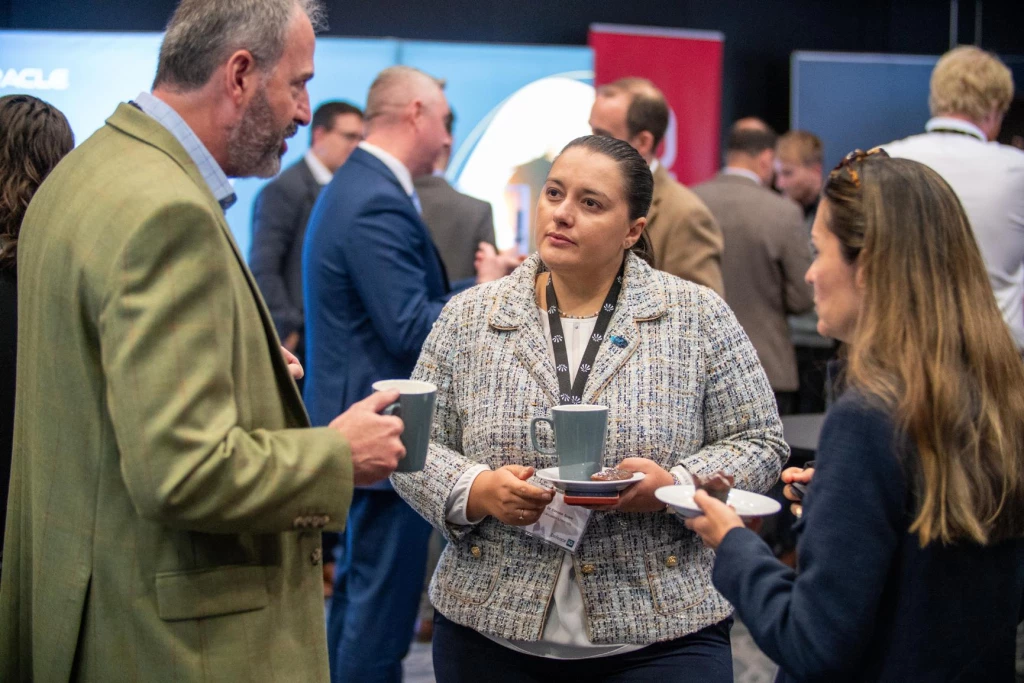Bridging the Valley of Death: High Value Manufacturing & UK Defence Innovation
Add bookmark
As part of our ongoing research into innovation and enterprise transformation in Defence, Defence iQ's Editor spoke to Stuart Donovan-Holmes, Technology Programme Manager (Defence & Space) at the National Composites Centre about how the UK's High Value Manufacturing Catapult (HVM Catapult) is helping UK Defence bridge the 'valley of death' and ensure continuous and rapid technology pull through, from concept to full-scale industrial adoption.
One of the aims of the HVM Catapult is to “bridge the gap between emerging innovation and industrial-scale manufacturing”. Could you describe how the Catapult does this and, in your experience, what are the biggest hurdles to ‘bridging the valley of death’ and scaling up technological innovation in UK Defence and Space?
The HVMC was created to boost the economic success of UK manufacturing in a number of sectors by connecting the vanguard of innovation found in Academia and SMEs through to Industry and supporting the maturity of these technologies to be adopted more effectively. Thereby keeping the UK manufacturing sector at the forefront of technology and allowing it to adapt with agility and pace to market needs.
In terms of Technology Readiness Levels this means we focus on the middle ground between early development and concept to full-scale industrial adoption – the bridge between these can be rife with legislative roadblocks and funding shortfalls, which is why it is termed the “valley of death” as this is the point at which many good ideas risk being abandoned. The HVMC aims to provide a supportive “bridge” to allow these good ideas a chance of survival.
We see ourselves as a key innovation stakeholder in the Defence, Security & Space sectors to ensure the Front-Line Commands of the MOD are supported in technology exploitation and innovation, when changes in capability are required. However, there are still hurdles to efficient technology pull-through when it comes to direct engagement with the MOD. Typical engagement is via a number of defence framework agreements, administered by the larger prime suppliers to the MoD and DSTL. This means there are multiple avenues to pursue, each with their own complexity.
With this in mind we are looking at ways to improve our ability to work more directly with the MOD to better support their ambitions laid out in the Defence Innovation Priorities white paper and the Defence Technology Framework. Allowing the MOD to utilise this vast network of Catapult Centres, each focusing on different technology families, in finding solutions to complex problems.
SMEs are an integral part of the UK’s Defence innovation system, although scaling, regulatory complexities and cultural rigidity remain significant barriers to entry. How is the Catapult working to support them, and are there any success stories you can share?
The MOD has ambitions to expand its engagement with SMEs, allocating up to 25% of procurement spend by 2022, as outlined in the MOD SME Action Plan, to allow them to tap into non-traditional suppliers who can develop solutions at a faster pace and at value for money to the taxpayer.
The HVMC aims to provide SMEs with an environment to mature their technology to levels where it can be adopted by the MoD and industrialised within its supply chain. One of the HVMC Catapult Centres is the National Composites Centre, which runs an SME specific programme called NCC Connect. This programme provides matched funding schemes to support SMEs, allowing them to utilise the best in composites expertise and equipment available in the country to further develop their concepts and ideas into reality.
Digital technologies, such as predictive analytics, robotics and AI, will transform the manufacturing industry and supply chains. How is the UK manufacturing industry adapting to ensure it can exploit new technology to improve its operations? Are there effective ‘digital transformation’ strategies emerging?
We recently launched the Centre for Digital Engineering Technology & Innovation (DETI) which is a research, innovation and skills initiative to support the South West region’s Local Industrial Strategy and is one of the building blocks in creating a Global Centre of Digital Innovation Excellence – bringing together innovative expertise to solve future challenges.
DETI will bring together leading companies and tech disruptors to create the design and digital engineering of the future. It will help cement the UK’s world leading position as an engineering nation, helping to overcome the world’s most complex challenges. It’s a collaboration of industry and academic partners led by the National Composites Centre, which sets out to develop and accelerate digital engineering across multiple industry sectors – to benefit future generations of engineers and engineering products, and to help tackle global challenges.
A competitive manufacturing industry, underpinned by the principles of innovation, is critical to the UK’s Defence posture. Reflecting on some of the HVM Catapult’s core capabilities (training, technology development, research and testing), where are you seeing the biggest changes/improvements in public-private sector engagement, and what are the areas where we need to see improvement?
Our aim is to make the wider UK Manufacturing sector a more intelligent customer by offering training and collaborative technology development to share in the knowledge and transfer the necessary skills to keep the UK competitive. We also have to anticipate what our customers’ needs might be in the future and plan our technology roadmaps accordingly, to ensure that we remain ahead.
The challenge in the Defence sector is that there is no clear line or connection between SMEs and Academia doing the innovative work, and the Front-Line Commands requiring it: how do we anticipate their needs without direct engagement, and conversely how do they know what is possible without being informed of the latest developments? This link is what needs to be strengthened to ensure the Front-Line Commands can adapt to new and evolving threats with a more agile approach.
Finally, the UK is currently dealing with the outbreak of coronavirus and the manufacturing industry has been called upon to support HMG. How has the UK manufacturing industry risen to this pressing challenge, and how is the Catapult enabling the rapid production and delivery of critical equipment?
During this difficult time, the HVMC has shown its ability to react quickly and effectively to the needs of government in this crisis by setting up the VentilatorChallengeUK consortium. Utilising the network of catapult centres, industry partners and academia to produce about 10 years’ worth of ventilator production in 10 weeks.
This experience has demonsted the strength in having this existing technology innovation network, meeting the needs of government with agility and pace. This is an opportunity for the MOD to reflect and learn from this experience when considering its way forward with innovation and technology aspirations.


























